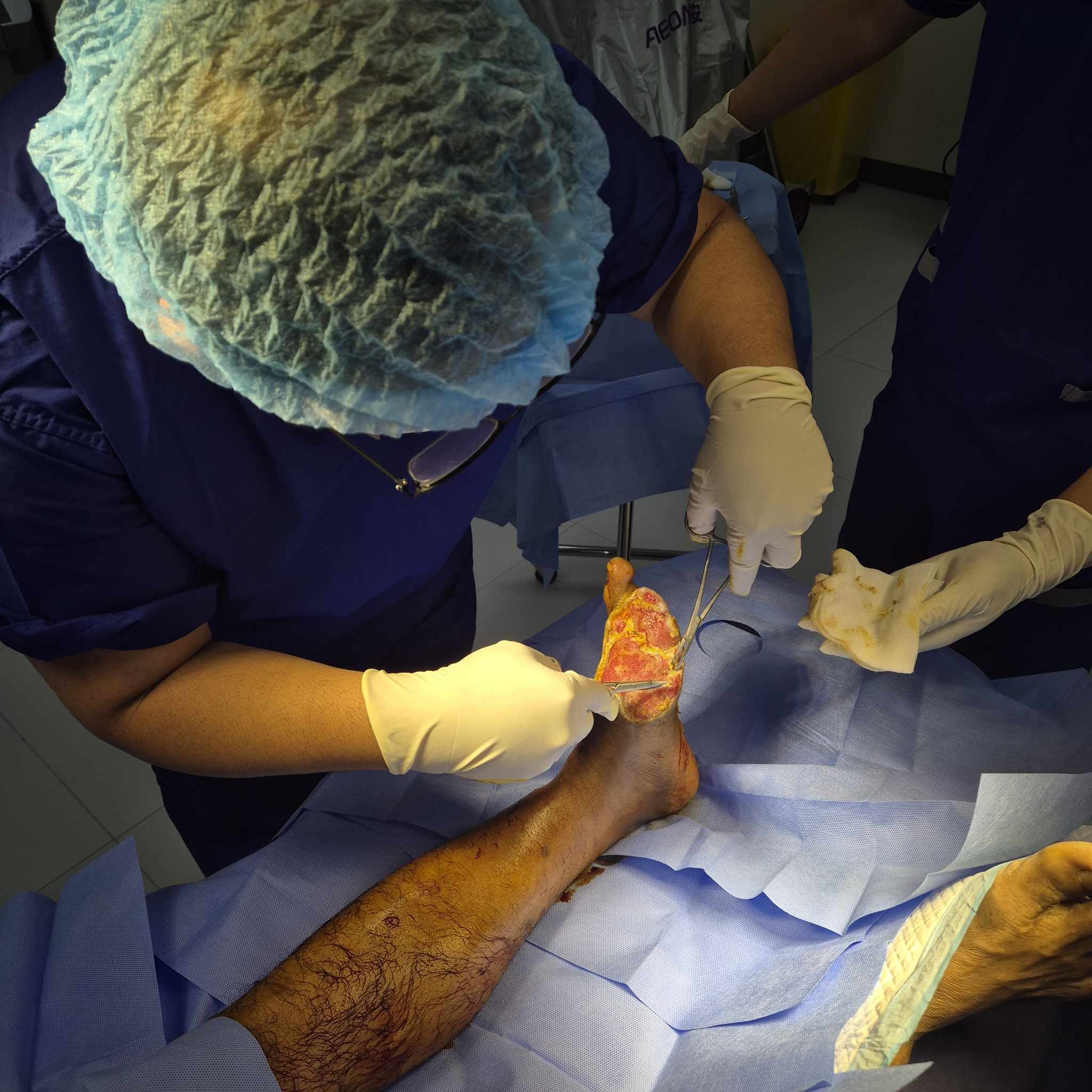Understanding Hip Replacement and Why People Choose It Abroad
Hip replacement is a surgical procedure designed to replace damaged or worn-out hip joints with artificial implants. This operation is often recommended for individuals who experience severe arthritis, fractures, or long-term mobility limitations that affect daily living. While hip replacement is a common procedure in many developed countries, the rising costs of healthcare have prompted patients to look for alternatives outside their home nation. Hip replacement medical tourism has become a practical solution for many individuals who want high-quality care without the financial burden. Traveling abroad for surgery may sound daunting, but it opens doors to excellent facilities that specialize in orthopedic care. Patients are discovering that the quality of care overseas often rivals or even surpasses what they would receive locally. With shorter waiting times and advanced recovery options, more people are considering traveling for this essential procedure.
The Rise of Hip Replacement Medical Tourism
The demand for hip replacement medical tourism has grown steadily in recent years. A significant factor driving this rise is the affordability of care overseas compared to U.S. hospitals. Patients can often save between 50% to 70% on surgery costs when they choose international medical centers. Countries like India, Thailand, and Mexico have positioned themselves as leaders in the field of orthopedic care, offering advanced technology and highly trained surgeons. At the same time, hospitals abroad are becoming globally recognized, with international accreditations ensuring patient safety and high-quality standards. Another reason for the increase is that healthcare systems in developed countries often have long waiting lists, leaving patients in pain for months or years. By traveling abroad, patients gain access to faster procedures and quicker relief. The convenience, combined with affordability and expertise, makes medical tourism an attractive option for individuals seeking hip replacement surgery.
Key Benefits of Hip Replacement Medical Tourism
One of the most significant advantages of hip replacement medical tourism is affordability. In countries such as India or Mexico, the same procedure can cost a fraction of what it does in the U.S. or Canada. Another benefit is access to internationally accredited hospitals that adhere to strict global healthcare standards. These facilities are staffed with surgeons who often train or practice in Western countries, ensuring their expertise is world-class. Shorter waiting times also make a big difference, as patients can schedule surgery much sooner than at home. Many hospitals offer comprehensive care packages, which may include pre-surgery consultations, accommodations, transportation, and rehabilitation. This approach makes the process more comfortable and organized for international patients. Additionally, some destinations provide recovery in peaceful environments, which can enhance healing and overall patient satisfaction.
Top Countries for Hip Replacement Medical Tourism
Several destinations stand out for hip replacement medical tourism due to their affordability and advanced healthcare services. India has become a leading choice because of its highly skilled orthopedic surgeons, modern hospitals, and cost-effective treatment options. Thailand is another top contender, known for blending medical expertise with luxury recovery facilities that make patients feel comfortable and supported. Mexico is popular for North American patients because of its close proximity, shorter travel times, and lower costs compared to U.S. hospitals. Turkey has also emerged as a medical tourism hub, offering cutting-edge technology and internationally trained doctors in modern facilities. Each of these destinations provides unique advantages depending on what a patient prioritizes—whether it is affordability, convenience, or a premium recovery experience. Patients are encouraged to research thoroughly to find the best country that aligns with their medical and personal needs.
What to Look for When Choosing a Medical Tourism Destination
When considering hip replacement medical tourism, it is important to research carefully before deciding. Accreditation is one of the first aspects to review, as international hospital certifications ensure safety and quality standards. Patients should also look into the experience and qualifications of the orthopedic surgeons who will perform the procedure. Language can sometimes be a barrier, so destinations with English-speaking doctors and staff may be preferable. Travel logistics such as visa requirements, accessibility of flights, and local transportation should also be considered. Another essential factor is the availability of post-surgery rehabilitation, which plays a vital role in recovery. Choosing a country that offers comprehensive support both before and after surgery helps ensure a smoother experience. Evaluating these elements will make the decision process easier and more reassuring.
Risks and Considerations in Hip Replacement Abroad
While hip replacement medical tourism offers many benefits, patients must also consider potential risks. One common concern is follow-up care, as returning home immediately after surgery may make it harder to access the same medical team if complications arise. Healthcare regulations vary from country to country, and while many international hospitals meet global standards, it is essential to verify credentials beforehand. Traveling after major surgery can also be challenging, as sitting on long flights may be uncomfortable and require special arrangements. Patients must ensure that their insurance policies cover procedures abroad, or they may face unexpected expenses. Another factor to think about is the cultural differences in medical communication, which may affect how treatment plans are explained. Having realistic expectations about recovery timelines is crucial when planning surgery abroad. These considerations should be weighed carefully to avoid challenges during the healing process.
Cost Breakdown: What to Expect in Hip Replacement Medical Tourism
The financial appeal of hip replacement medical tourism lies in its substantial cost savings. In the United States, a hip replacement can cost anywhere from $30,000 to $60,000. By comparison, patients can often find the same procedure in India for $7,000 to $10,000, in Mexico for $12,000 to $15,000, and in Thailand for around $14,000 to $18,000. These estimates often include not only the surgery itself but also hospital stays, surgeon fees, and sometimes even rehabilitation packages. However, additional costs such as airfare, accommodations, and travel insurance should also be factored into the budget. Many hospitals abroad provide bundled packages that simplify these expenses and make planning easier. Some patients also explore financing options or international medical insurance to make the process more affordable. Knowing the full cost picture helps patients make informed choices and avoid financial surprises later.
Preparing for Your Hip Replacement Journey Overseas
Planning ahead is essential for anyone considering hip replacement medical tourism. Patients should start by gathering their medical records and undergoing a pre-surgery consultation, either virtually or through a medical tourism agency. Travel documents such as passports and visas must be arranged well in advance to avoid last-minute stress. Asking hospitals and surgeons the right questions about success rates, recovery protocols, and support services is critical to building confidence in the decision. Patients should also consider travel insurance policies that specifically cover medical procedures abroad. Arrangements for recovery should be carefully planned, including transportation after surgery and the availability of a companion to assist. Allocating sufficient time for rest before flying back home will contribute to a safer and smoother recovery. By preparing thoroughly, patients can feel more secure and confident in their medical journey abroad.
Patient Experience and Quality of Care in Medical Tourism
The quality of patient care in hip replacement medical tourism has significantly improved over the years. Many international hospitals are designed with comfort in mind, offering private rooms, multilingual staff, and personalized attention. Medical tourism agencies often coordinate the entire process, from initial consultations to post-operative care, which reduces stress for patients. Hospitals also provide dedicated support for international patients, including assistance with travel, accommodations, and local guidance. Some facilities even combine recovery with wellness activities such as physiotherapy, spa treatments, and holistic care. Cultural sensitivity is also an important element, with hospitals training staff to respect the diverse backgrounds of their patients. All these measures create an environment where individuals feel supported and well cared for during their recovery journey. The overall experience is designed to balance excellent medical treatment with personal comfort and reassurance.
The Future of Hip Replacement Medical Tourism
The future of hip replacement medical tourism looks promising as medical technology and global healthcare systems continue to advance. Minimally invasive hip replacement procedures are becoming more widespread, reducing recovery times and attracting even more international patients. Telemedicine is also playing an increasing role, allowing patients to consult with surgeons before traveling and stay in touch after returning home. More insurance companies are beginning to recognize the value of medical tourism and are offering policies that include international procedures. As travel becomes easier and healthcare awareness grows, more individuals will consider seeking surgery abroad. Another emerging trend is the rise of medical tourism cities that specialize in orthopedic care, offering entire communities built around healthcare excellence. With innovation and accessibility on the rise, hip replacement abroad will continue to expand as a viable healthcare solution. Patients can expect even greater options and improvements in the years ahead.
Frequently Asked Questions (FAQ)
Is hip replacement medical tourism safe?
Yes, it can be safe when patients choose internationally accredited hospitals and qualified surgeons. Research and preparation are key to ensuring a positive outcome.
How much can I save by getting hip replacement surgery abroad?
Patients typically save between 50% and 70% compared to costs in the U.S., depending on the country and hospital selected.
What is the recovery time after hip replacement overseas?
Recovery time is similar to procedures done locally, often requiring six to twelve weeks for full mobility. Some destinations also offer enhanced rehabilitation programs.
How do I verify the credentials of foreign surgeons?
Patients should look for international board certifications, hospital accreditations, and verified patient reviews. Many hospitals provide surgeon profiles and experience details online.
Can I bring a family member or companion during recovery abroad?
Yes, most hospitals encourage patients to bring a companion. Many facilities offer accommodations and services designed for both patients and their families.










